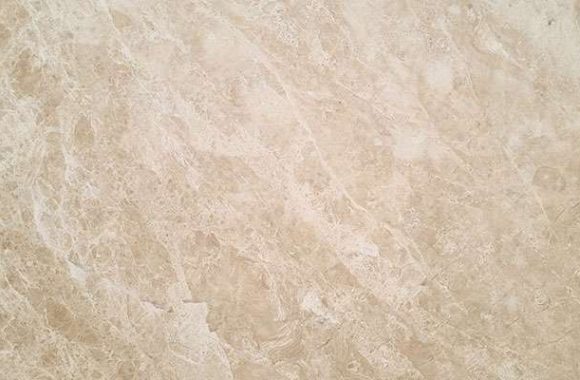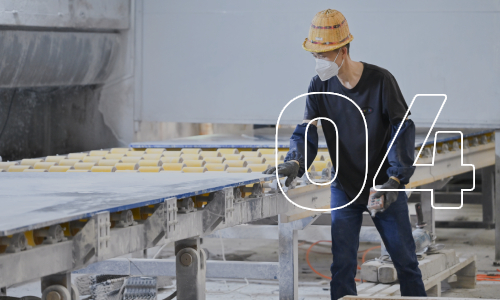Polishing and finishing
Overview
Marble and natural stone surfaces can be made more aesthetically pleasing and long-lasting by polishing and finishing. By enhancing its sheen and shielding it from deterioration, these procedures enhance the stone’s beauty.

Steps in Polishing and Finishing
Surface Preparation
- Cleaning: To get rid of dust, debris, and any prior sealants, start with a thorough cleaning. To prevent harming the stone, use a pH-neutral cleanser.
- Inspecting: Before polishing, look for any chips, cracks, or other flaws that could need to be fixed.
Grinding
- To eliminate any blemishes or scratches, use diamond grinding pads. To smooth the surface, start with a coarse grit (such as 50–100) and work your way up to finer grits (up to 3000).
- In order to have a smooth and level surface prior to polishing, this step is crucial.
Polishing
- Use polishing pads with finer grits after grinding. Usually, 400–3000 grit pads are used for this.
- To improve the process and lessen heat and friction that could harm the stone, use water or a polishing compound.
- To get a high-gloss finish and apply constant pressure, use a buffer or a high-speed polisher.
Buffing
- To improve the sheen and get rid of any remaining polish, buff the surface with a soft cloth or a dedicated buffing pad after polishing.
- A reflective sheen that accentuates the stone’s inherent beauty can be achieved with the aid of this phase.
Sealing
- It’s crucial to use a high-quality stone sealant after polishing. This shields from wear, moisture, and stains.
- Before using the surface, let the sealer cure according to the manufacturer’s directions.
Regular Maintenance
- Create a regular cleaning schedule with pH-neutral cleansers to preserve the polished surface’s lustre and integrity.
- Over time, repolishing might be necessary, particularly in places with a lot of traffic.
Considerations
Type of Stone: Because different stones (such as granite, marble, and limestone) have different levels of hardness and porosity, they may need different polishing methods and supplies.
Professional Assistance: For delicate finishes or big areas, think about working with professionals that have the knowledge and tools necessary for the best results.
Safety: When handling polishing supplies and tools, always wear protective clothing, such as gloves and goggles.

Ready for the next step?
For marble and natural stone to have a beautiful appearance and last a long time, polishing and finishing are crucial. Your stone will continue to look its finest for many years to come if you use the right methods and do routine maintenance.









